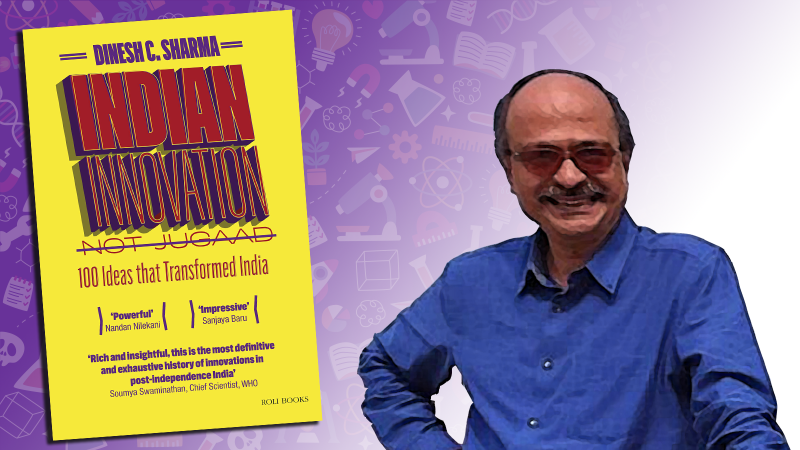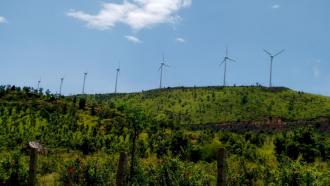
One of the basic rules of the universe is that nothing is perfect. Perfection simply doesn't exist… Without imperfection, neither you nor I would exist.
- Stephen Hawking
In the run-up to celebrating 75 years of independent India, it is imperative that one takes stock of how we fared in all facets. As Stephen Hawking says, nothing in the universe is perfect, so our journey since independence cannot be perfect. The country has witnessed several challenges: the economy, managing its resources, and even defending against external forces. She has stood the test of time, fighting against illiteracy, social injustices, poverty, among many other social ills, and now fighting against the pandemic caused by the Covid-19 virus.
Despite the odds, the country has gradually emerged as a leading nation globally by being resilient in many ways. The constitution we have embraced, the laws we have enacted, the institutions we have built, the systems we have put in, the processes we have established, the innovations we have done, and the people who have made all these possible should take a bow. Although it may not have been perfect or the most optimal one, there are enough reasons to cheer but not be complacent about them, as we still have miles to go.
Dinesh Sharma’s latest book, ‘Indian Innovation - 100 ideas that transformed India’ published by Roli Books, can be a wonderful treasure for anyone willing to understand and get a peek into many things that worked in independent India. Dinesh Sharma takes up the humongous task of putting together a hundred ideas that have worked and transformed India post-independence. As the author notes, this is by no means exhaustive but is a sincere attempt to put these many ideas in one basket. The pandemic may have been devastating to the life and economy of India, but one good thing that it did, gave Dinesh Sharma the opportunity to write this book.
The book is organised into ten sections, with seven to seventeen chapters under each section. It starts with Revolutions, capturing all the key revolutions – green, white, blue, yellow, the egg, IT and communication. The author notes that these are indeed innovations, and perhaps they are ‘evolutions’, but with popular imagination, they are best kept as revolutions. If one were to extend this, they would now include the start-up revolution the country is now experiencing. A key ingredient that made all the (r)evolutions possible was the backing of science, notes Dinesh Sharma.
Moving on, the next section is on Food, Water and Sanitation. This rightfully talks about the Midday Meal Scheme, the Integrated Child Development Scheme (popularly known as ICDS), and Sulabh Toilets, to name a few. The next section on Health and Medical Research has the largest number of ideas (chapters) in comparison to other sections. From the National Family Planning Programme to ASHAs, Pulse Polio campaigns, to Jaipur Foot and Mohalla Clinics, all find a place here. India has played a key role in affordable vaccines, a well-deserving inclusion. And something that was also put into motion due to the pandemic was the enhanced production of vaccines, low-cost ventilators, and oxygen langars. Dr Chandrasekhar Nair’s point-of-care testing platform for PCR-based medical diagnostics, which enabled testing for millions of COVID-19 cases, deserved mention.
The next section is on Transport and Mobility. Maruti 800, Reva Electric Car, Air Deccan, the Golden Quadrilateral and Yulu, the shared e-bike find a place as individual ideas. Among the mass transit systems, Delhi Metro finds a place, but the numerous other initiatives across the country on dedicated Bus-Rapid Transit Systems to bus-based public transport systems in tier-II cities, perhaps need to crack it like the Midday Meal Scheme for it to be scaled and replicated.
The author then has the section on Information and Communication Technology. India’s growth story cannot be complete without mentioning the advents made in ICT. The notable inclusion here is the Simputer, apart from the STD/PCO and Internet Kiosks and the Software Technology Parks. As a student, I vividly remember the Simputer was already popular on the Indian Institute of Science (IISc) campus during the early 2000s. Perhaps, it was too early in the market for anyone to conceive that a handheld device could do a lot, pretty much like what today’s smartphone does, but twenty years ago! Nevertheless, it certainly stands out as an exemplary feat not only in software but in hardware development too.
The subsequent section is on Governance, Public Utilities and Law. The formulation of the indelible ink by the CSIR and its adoption by the Election Commission of India has been widely lauded. Another such innovation was the Electronic Voting Machine. Along the same lines, one of the notable mentions is that of the Bhoomi project in Karnataka, which digitised the land records of non-urban areas in Karnataka. The Bhoomi project did reduce the misery one had to go through getting the land records, particularly the Records of Rights, Tenancy & Crops ((RTC). It also takes note of the Right to Information (RTI) as a consequence of the people’s movement, the Lok Adalat systems and the tool of Public Interest Litigation that empowered the citizens to seek an appropriate and speedy response from the Government.
The author then navigates the reader to the section on Education. The new independent India has been a witness to the Indian Institute of Technologies (IITs), the Indian Institute of Management (IIMs), the All India Institute of Medical Sciences (AIIMS), the National Institute of Design (NID), and more recently the Indin Institute of Science Education and Research (IISERs). Perhaps, a book on each of these would not suffice. Chinmay Tumbe has attempted to capture the role of Dr Kamla Chowdhry in shaping IIM Ahmedabad. She deserves rightful credit and acknowledgement for her role in the formative years of IIM Ahmedabad.
One of the ideas mentioned here is the novel and low-cost paper microscope, Foldscope by Manu Prakash and Jim Cybulski. Although this is indeed a remarkable innovation, this may not be a truly Indian idea/innovation that we could claim, as this was invented in Prakash Labs at Stanford University, USA. Instead, Arvind Gupta’s Toys from trash for science popularisation is a truly Indian innovation that deserved mention, for which he also received the Padmashri.
In the next section, the author dwells on Grassroots Technologies and Movements. Any grassroots technology movement in India is incomplete without the well-known Honeybee Network led by Prof Anil Gupta of IIM Ahmedabad. The author also notes two women-led movements – SEWA’s microfinance model and the Lijjat Papad.
As a student of the Centre for Sustainable Technologies (formerly Centre for Application of Science and Technology for Rural Areas, ASTRA) at IISc, one had to undergo the course on bioenergy technologies and is naturally drawn into the history of the centre. The centre was established at the instance of Prof Amulya Kumar N Reddy, a Professor of Electrochemistry and ably supported by Prof KS Jagadish, then a faculty at the Department of Civil Engineering, IISc, during the 1970s. They were instrumental in developing a host of biomass-based energy-efficient devices and methods for low-cost buildings, amongst others. The ASTRA ole, or the energy-efficient stove, was a hit, and one can still see them in weekly shanties of rural Karnataka. The other innovation from the centre is stabilised mud blocks with lesser embodied energy than conventional bricks. In the fight against climate change, embracing them could be an imperative climate-friendly action. It is indeed thrilling to see the mention of ASTRA amongst the hundred ideas.
There is also a chapter on the Sachet revolution in this section. It is clear that a marketing gig opened up newer markets, particularly for the Shampoo and such in the FMCG sectors. It is unclear how it is a grassroots technology or movement. As the author describes, this was something introduced by a company in Cuddalore, Tamil Nadu, to sell shampoo in sachets. Further, on the one hand, even if we accept this as an innovative idea for a moment, on the other hand, this has also resulted in irresponsible littering across, not to mention the environmental damage it has caused.
The author then has a section on Art, Culture, Cinema, Architecture, Sports. India is a land of diverse cultures, languages, customs and traditions. It is also rich in heritage and creative practice. Some notable ones that make it to the list are Binaca Geet-Mala, SPIC-MACAY, Dilli Haat, and Palace on Wheels, among others, including the ongoing Indian Premier League.
The book's last section is on the Environment and Peoples’ Movements. The Chipko movement and the revival of Arvari River by the Tarun Bharat Sangh epitomise the people’s movement in the truest sense. And they have been very successful too. The other chapters in this section are Project Tiger, Navdanya Seed Bank, and Dhara Vikas, among others. And the last chapter, on Migrant Watch, a citizen science project led by Suhel Qader from the Nature Conservation Foundation, deserves a special mention.
A careful examination of all the ideas listed here brings out a couple of interesting aspects. Barring a few that have been driven top-down, many of them are an outcome of actual bottom-up grassroots efforts. On the one hand, it may be wishful thinking that it would have been great for the state to have taken up these initiatives than the people pitching in to address the needs; on the other hand, mindful of the limitations of the state, we should acknowledge that the state has allowed these to flourish and succeed.
Yet, one of the biggest let-downs in independent India has been the lawmakers and the process of law-making itself. There are still scores of laws in vogue enacted by the British. And several ones that were enacted during the early days of independence need overhauling to adapt to changing times. But our lawmakers are comfortable with amendments, and often many of them are regressive. A change that India badly deserves in the present times is a renewed law-making process by our lawmakers.
Most of the ideas (chapters) have a sub-section called Key Players or Key People that does justice to those behind them. The book is very well researched and cited well with appropriate references. Dinesh Sharma’s writing is lucid and engaging, devoid of jargon or technical details that could put off a lay reader.
Have we realised or fulfilled our founding fathers' dreams will be something that requires a deeper analysis and introspection. Nevertheless, what we will achieve and how we will steer the nation going forward will be a witness to history. And most of the ideas here are worthy of pursuing that could help fulfil our founding fathers' aspirations.
In summary, for those who want to get an insight into all of these, go get your copy, and you will not regret it.
Disclosure: Gubbi Labs LLP, which funds Research Matters, is one of the authorised distributors of Foldscope in India.






